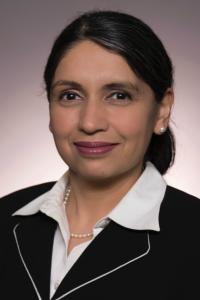
Considering A Preventative Mastectomy?
A Conversation with Columbia Chiefs of Breast Surgery and Plastic Surgery
In recent years, headlines about younger women’s diagnoses and public figures sharing their stories have brought breast cancer into the public conversation in new and unexpected ways. When Angelina Jolie revealed that she underwent a preventative double mastectomy to reduce her risk of breast cancer, it sparked global discussion. Soon after, other celebrities, including Wanda Sykes and Christina Applegate, shared their own decisions to undergo the procedure. Thanks to this surge of awareness, many now understand that genetics play a role in breast cancer risk, and this leaves some wondering: What can I do to reduce my risk?
The first step is usually genetic testing. But some go further, considering one of the most proactive, and altering, options available, a prophylactic mastectomy.
To help patients and families better understand this complex choice, we spoke with Roshni Rao, MD, FACS, chief of breast surgery and Christine Rohde, MD, MPH, chief of plastic and reconstructive surgery at Columbia University Irving Medical Center. Together they shared insights on who might consider prophylactic mastectomy, what the procedure involves, and what patients should know before making this decision.
Can you explain what a prophylactic mastectomy is and how it differs from a regular mastectomy?
Dr. Rao: A prophylactic or risk-reducing mastectomy is a preventive surgery performed in people who have not been diagnosed with breast cancer but are at high risk of developing it. In contrast, a therapeutic mastectomy is done to treat breast cancer that has already been diagnosed.
The surgical techniques are often the same: depending on the case, the entire breast is removed, and sometimes the skin or nipple can be spared to allow for more natural reconstruction. The major difference is the purpose: preventive rather than curative.
Have you noticed an uptick in patients inquiring about or undergoing prophylactic mastectomy?
Dr. Rohde: Yes. In the U.S., there has been a steady increase over the past two decades. We started to see the trend emerging in the early 2000s, and by the mid-2010s the rate had nearly tripled across all age groups. It’s been a steady trend since then. We’re also seeing more bilateral mastectomies overall, which often means that one side is being treated for cancer and the other is being removed prophylactically.
Why do you think that is?
Dr. Rao: More knowledge usually leads to more informed choices. As genetic testing has become more common, people now have a clearer picture of their individual cancer risk. Public awareness has also grown, especially as celebrities have shared their breast cancer diagnoses and treatment decisions.
Dr. Rohde: While this was happening, advances in breast reconstruction have made surgery less invasive, recovery easier, and results more natural. When you put all of that together, patients feel more comfortable asking about and moving forward with this option.
How effective is prophylactic mastectomy in reducing breast cancer risk?
Dr. Rao: For women at very high genetic risk, prophylactic mastectomy is one of the most effective risk-reduction strategies available. It lowers the risk of breast cancer by about 90–95%. That said, it’s not absolute- because a small amount of breast tissue may remain after surgery, it’s not possible to reduce the risk to zero. For people with BRCA1 or BRCA2 mutations, where lifetime risk of breast cancer can be 60% or higher, surgery can bring that risk down dramatically, which for many patients feels like a tremendous relief.
Who should consider this procedure?
Dr. Rao: Prophylactic mastectomy is generally reserved for people who are at significantly higher-than-average risk of developing breast cancer. That includes those with known genetic mutations such as BRCA1, BRCA2, TP53, or PALB2; individuals with a very strong family history of breast cancer; or women who received chest radiation at a young age. Sometimes, women without a gene mutation but with a strong family pattern of breast cancer may also consider it. It is not recommended for the average-risk population, since less invasive strategies, like regular mammograms, breast MRI, and risk-reducing medications, are usually appropriate.
Some women in their 20’s or 30’s who learn about their genetic risk choose surgery after their genetic testing or having children. Others may wait until they have already had years of intensive screening.
Though it’s much less common, men also can, and do, have the procedure. The average man’s risk of breast cancer is very low, about 0.1% - but men with BRCA mutations, especially BRCA2, face a higher lifetime risk of 5–10%. In those cases, preventive surgery may be an option, particularly if there is a strong family history.
What about people who already had breast cancer, or have certain precancerous conditions like LCIS?
Dr. Rao: Yes, those with a prior history of breast cancer or certain types of breast pathology may also consider the procedure. One example is lobular carcinoma in situ (LCIS), a non-invasive, precancerous condition that affects the breast lobules, which are the milk-producing glands. For patients with LCIS, typically we calculate their unique lifetime risk of developing breast cancer first and then review their options for either enhanced surveillance or prophylactic mastectomy based on that personal calculation.
How does prophylactic mastectomy come into play for stage 0 breast cancer?
Dr. Rao: Stage 0 breast cancer, also called ductal carcinoma in situ (DCIS), is the earliest stage of breast cancer. Unlike LCIS, DCIS is a true precursor to invasive breast cancer and is treated as cancer, rather than just monitored. For most people, treatment involves breast-conserving surgery (lumpectomy), often followed by radiation. If DCIS is very widespread in the breast or appears in more than one area, a mastectomy may be recommended. In this situation, however, a mastectomy would be considered curative, not preventive, since it is treating an existing cancer rather than reducing future risk.
How is prophylactic mastectomy performed? Does it happen at the same time as reconstruction?
Dr. Rohde: Modern techniques allow us to spare skin and sometimes the nipple, which can make reconstruction look and feel more natural. Reconstructive surgery recreates the natural look and feel of the breasts.
It can be done at the same time as mastectomy or delayed until a later date. Patients may choose implants, or reconstruction using their own tissue, such as from the abdomen or back.
One advantage of prophylactic surgery, compared to mastectomy after cancer, is that we can often plan reconstruction more flexibly, since there’s no need for follow-up radiation or chemotherapy. It’s important to note that not all mastectomy patients will be candidates for breast reconstruction, and some may prefer not to undergo reconstruction for various reasons.
For those that do, Columbia’s surgeons perform all types of breast reconstruction. That can include implant-based reconstruction or using a patient’s own tissue, depending on their needs and preferences.
We also offer risk-reducing lymphatic surgery, a specialized microsurgery that can be done at the time of the initial cancer surgery to improve lymphatic drainage and reduce the risk of developing lymphedema, a condition that can happen after lymph nodes are removed.
Why do some women without very high risk choose to remove both breasts?
Dr. Rao: It’s important to distinguish between prophylactic mastectomy in high-risk women and bilateral mastectomy chosen by women who have cancer in only one breast. For most of those patients, removing both breasts does not improve survival compared to lumpectomy plus radiation. Still, some women choose bilateral mastectomy for personal reasons: reducing anxiety about recurrence, avoiding future mammograms or MRIs, or achieving symmetry in reconstruction. As with any major operation, there are risks: infection, bleeding, poor wound healing, scarring, and numbness of the chest are the most common. While we don’t recommend it for everyone, we understand the personal motivations behind that decision.
What does the latest research tell us about prophylactic mastectomy? Are there any emerging areas of risk that patients should be aware of?
Dr. Rohde: Some recent studies show that removing both breasts at the same time when one already has cancer does not increase surgical complications or delay chemotherapy, radiation, or hormone therapy. That’s reassuring for patients and doctors planning treatment. Another area of research is breast implant–associated lymphoma. This is very rare, and the overall safety of reconstruction remains excellent, but we do educate patients about signs to watch for and continue to study it.
Columbia is also very engaged in breast cancer disparities research, so we are looking beyond individual risk to understand which communities are most affected by the disease overall and how they interact with the healthcare system. If we can identify populations most impacted, we can then close these gaps and ensure that advances in prevention, early detection, treatment, and reconstruction benefit all patients equally.
What do you tell patients who are considering prophylactic mastectomy?
Dr. Rao: This is an intensely personal decision – and a major surgery. Overall, we never want to remove healthy breast tissue. Some women feel empowered by the surgery; others prefer close surveillance with regular imaging, and both are valid.
My role is to provide clear, accurate information, introduce them to a plastic surgeon like Dr. Rohde if they’re considering reconstruction, and support them in making the decision that best aligns with their values, lifestyle, and goals. Ultimately, we want patients to feel confident that they made the right choice for themselves.


